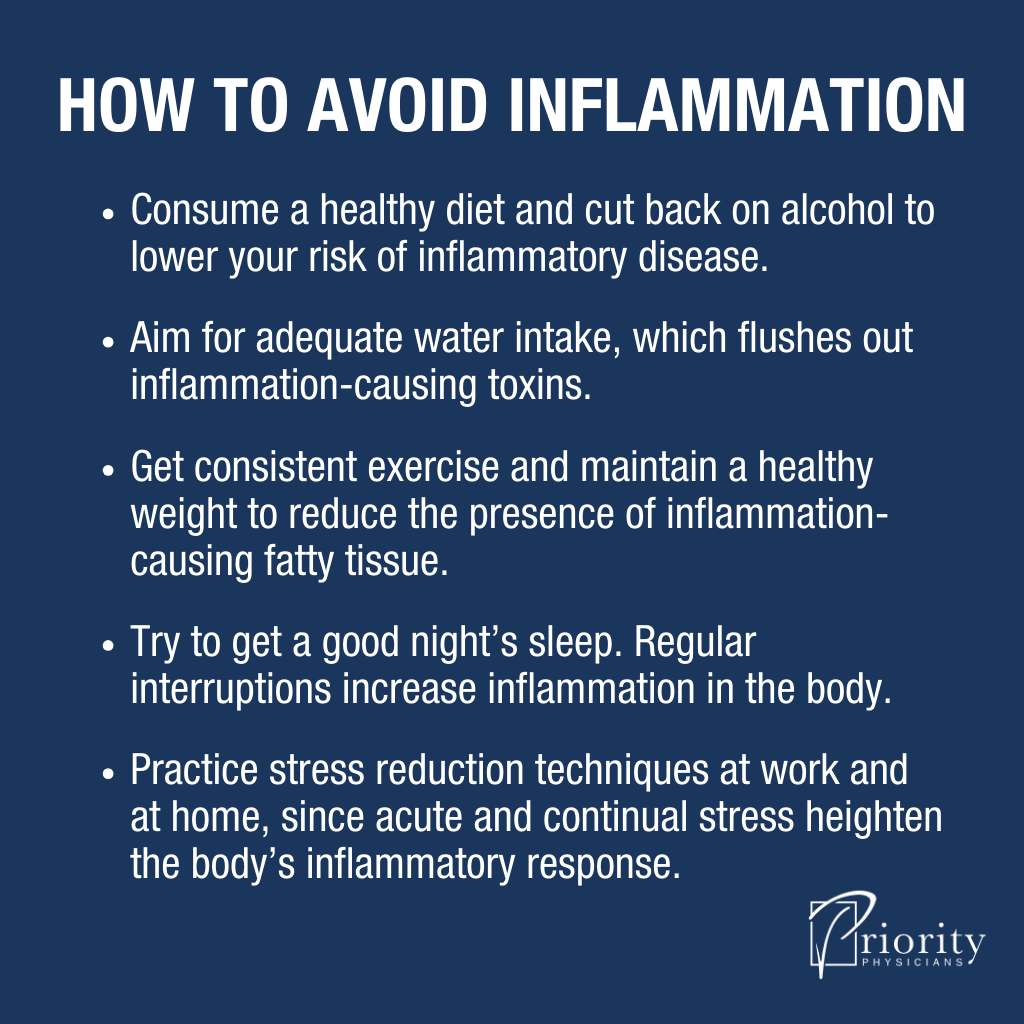It was a beautiful morning — until you fell off your bike. Now, you’re wincing as you try to deal with a swollen arm. Is the swelling caused by infection or inflammation? Do you know the difference?
If not, don’t worry. Today, I’ll define infection vs. inflammation and explain how to treat both.
Infection vs. Inflammation: What’s the Difference?
Inflammation is the root of all evil. As I tell my patients, inflammatory markers (such as C-reactive protein) signal the spread of inflammation within the body, and that inflammation causes much of the physical dysfunction we experience in life.
Some may ask, “Can’t I just take an antibiotic for inflammation?” No. You’re thinking of infection. Quite different from inflammation, infection almost always calls for some form of medication to treat it.
It’s good for you to have a basic understanding of both infection and inflammation. By knowing the difference between infection vs. inflammation, you can better manage your health and your family’s by pursuing the correct form of medical treatment when you feel pain or see swelling.
Let’s break it down:
Infection
Infection occurs when a foreign organism (usually bacteria or a virus, but occasionally a fungus or parasite) enters an area of the body where it’s unwelcome.
For example, bacteria may invade a cut on your leg and cause a skin infection known as cellulitis. Bacteria are the root of dozens of ailments, such as strep throat, pneumonia, and many sinus or ear infections.
We typically treat infections that the body can’t heal on its own with a course of antibiotics appropriate for both the infected site and the infection’s severity.
Inflammation
Inflammation occurs when the body’s immune system becomes activated, triggering immune cells (and others) to flock to the affected area and address whatever is occurring. It’s a critical part of your body’s natural defense against infection, trauma, and injury.
But too much inflammation is not a good thing. Inflammation in one part of your body can trigger it elsewhere as well. For instance, catching a severe cold may flare up your arthritis as the inflammation spreads throughout your body!
You can experience inflammation without an infection; however, an infection typically causes inflammation. The two can also work in tandem. COVID-19, for example, is a virus that can trigger inflammation throughout the body. That widespread inflammation then creates an environment conducive to secondary infections, like pneumonia or post-COVID bronchitis.
A Word About Chronic Sterile Inflammation
When inflammation recurs frequently by itself, without an infection, it’s known as chronic sterile inflammation. This differs from infection-based inflammation in that it can eventually cause lasting damage to an affected area, such as permanent changes to a particular joint from arthritis.
Thought to be the root cause of many diseases, chronic sterile inflammation is the basis for autoimmune disorders such as sarcoidosis, hypothyroidism, rheumatoid and psoriatic arthritis, and inflammatory bowel disorders like Crohn’s disease and ulcerative colitis. Medical scientists are investigating how understanding and addressing our bodies’ inflammatory markers might eventually help us avoid certain cancers, heart attacks, and strokes.
Treating Inflammation
If you have a fever and systemic symptoms all over your body, such as with coronavirus, seek medical care.
But sometimes, even with no infection present, low-grade inflammation can lurk in your body. As it becomes chronic, it has the potential to permanently damage the surrounding cells and tissues.
This phenomenon, called chronic smoldering inflammation, is often overlooked for treatment. But we want to eliminate it before it triggers more severe issues.
Treat swelling and inflammation with a non-steroidal anti-inflammatory drug (NSAID) like ibuprofen (Advil) or naproxen (Aleve). If it doesn’t resolve within a few days — or if you feel continuous warmth, tightness, or discomfort in any area of the body — reach out to your doctor for a thorough evaluation to see if low-grade inflammation is present.
Arthritis, in particular, is an inflammation-based process, meaning other ailments can aggravate it. Your arthritis will be easier to manage and treat appropriately if you can avoid sprains and inflammatory illnesses. Consult your physician if you experience any sort of injury or sickness that might aggravate your arthritis.

Avoiding Inflammation
Some amount of swelling is good — it’s your body’s way of telling you that healing is underway. But it’s a good idea to monitor your inflammation to ensure it doesn’t stick around.
Also, manage these elements of your lifestyle carefully to keep potentially dangerous inflammation away:
- Nutrition: Consume a healthy diet and cut back on alcohol to lower your risk of inflammatory disease.
- Hydration: Aim for adequate water intake, which flushes out inflammation-causing toxins.
- Exercise: Get consistent exercise and maintain a healthy weight to reduce the presence of inflammation-causing fatty tissue.
- Sleep hygiene: Try to get a good night’s sleep. Regular interruptions increase inflammation in the body.
- Stress levels: Practice stress reduction techniques at work and at home, since acute and continual stress heighten the body’s inflammatory response.
At Priority Physicians, we regularly tackle the puzzle of infection vs. inflammation. We know good inflammation from bad, and we can address the bad.
We’re here to help you with the right medication, if needed, or to recommend lifestyle modifications that keep inflammation to a minimum. Contact us to chat at any time.


